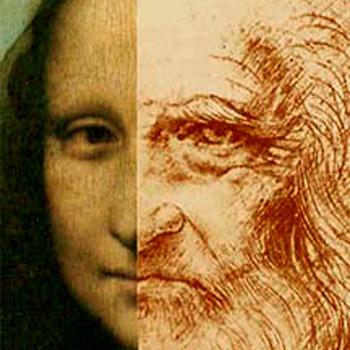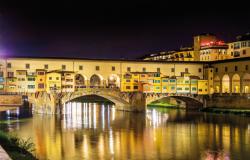The Mona Lisa is a disguised self-portrait of Leonardo da Vinci, a new book claims.
American scholar Lillian Schwartz says in the book, Leonardo's Hidden Face, that computer studies of Leonardo's self-portrait "superimpose perfectly" with that of his most famous subject.
Schwartz first gained headlines with her claim in 1987. The book is the first time she has published it.
It is supported by Florentine architect and writer, Renzo Manetti, a co-author of the book, who claims Leonardo had a "philosophical" reason for putting himself into the picture.
In the past, several scholars suggested the artist's homosexuality and love of riddles and puns led him to playfully paint himself as a woman.
The new book also challenges the now generally accepted identity of the woman as silk merchant's wife Lisa Gherardini.
The third co-author, Leonardo Museum chief Alessandro Vezzosi, claims Leonardo told a Spanish cardinal his sitter was a Florentine courtesan, one of the favourites of Giuliano de' Medici.
The book will have a hard job knocking Gherardini off her perch because the strength of her claim is so strong.
Italian scholar Giuseppe Pallanti presented a compelling argument in 2004 to cap centuries of evidence in favour of Gherardini, the second wife of Francesco di Bartolomeo de Zanobi del Giocondo.
Gherardini was a candidate ever since Italian painter and art historian Giorgio Vasari named her in 1550, hence bequeathing the portrait its alternative title La Gioconda.
According to Vasari, who never saw the painting and was writing 40 years after it was completed, "Leonardo undertook to paint for Francesco del Giocondo a portrait of Monna Lisa his wife".
What Pallanti did was to give weight to Vasari's claim by providing the first clear evidence that Leonardo da Vinci's family were close to the Giocondo family and that Vasari himself knew the Giocondos and hence was a credible source.
Pallanti - who went on to find Gherardini's birthplace and grave - also said the Mona Lisa (mona is the standard Italian contraction for madonna, or "my lady,") was painted around 1503, when Gherardini was 24.
ENDLESS THEORIES.
Unlike most Renaissance portraits, the Mona Lisa bears no date or signature, nor is the name of the sitter given.
These omissions, coupled with the sitter's mysterious close-lipped smile, have helped spawn endless theories about the woman's identity.
Various contemporary court beauties and noblewomen have been put forward, including Isabella d'Este and Isabella Gualanda, while some have concluded that she was Leonardo's mother.
Other academics argue that the sitter was one of his favourite young lovers disguised as a woman.
Such theorists note that da Vinci never relinquished the painting, keeping it with him up until his death in Amboise, France in 1519.
There is in fact no evidence that da Vinci was paid for the portrait, which is housed in the Louvre in Paris, or that it was ever delivered.
The Mona Lisa's strange smile has also led to endless speculation and theories, some of the most curious provided by medical experts-cum-art lovers.
One group of medical researchers has maintained that the sitter's mouth is so firmly shut because she was undergoing mercury treatment for syphilis which turned her teeth black.
An American dentist has claimed that the tight-lipped expression was typical of people who have lost their front teeth, while a Danish doctor was convinced she suffered from congenital palsy which affected the left side of her face and this is why her hands are overly large.
A French surgeon has also put forth his view that she was semi-paralysed, perhaps as the result of a stroke, and that this explained why one hand looks relaxed and the other tense.
This year an Italian doctor pointed to an alleged puffy cheek and swollen hand to claim she was suffering from a 'fatty blood' disorder.




